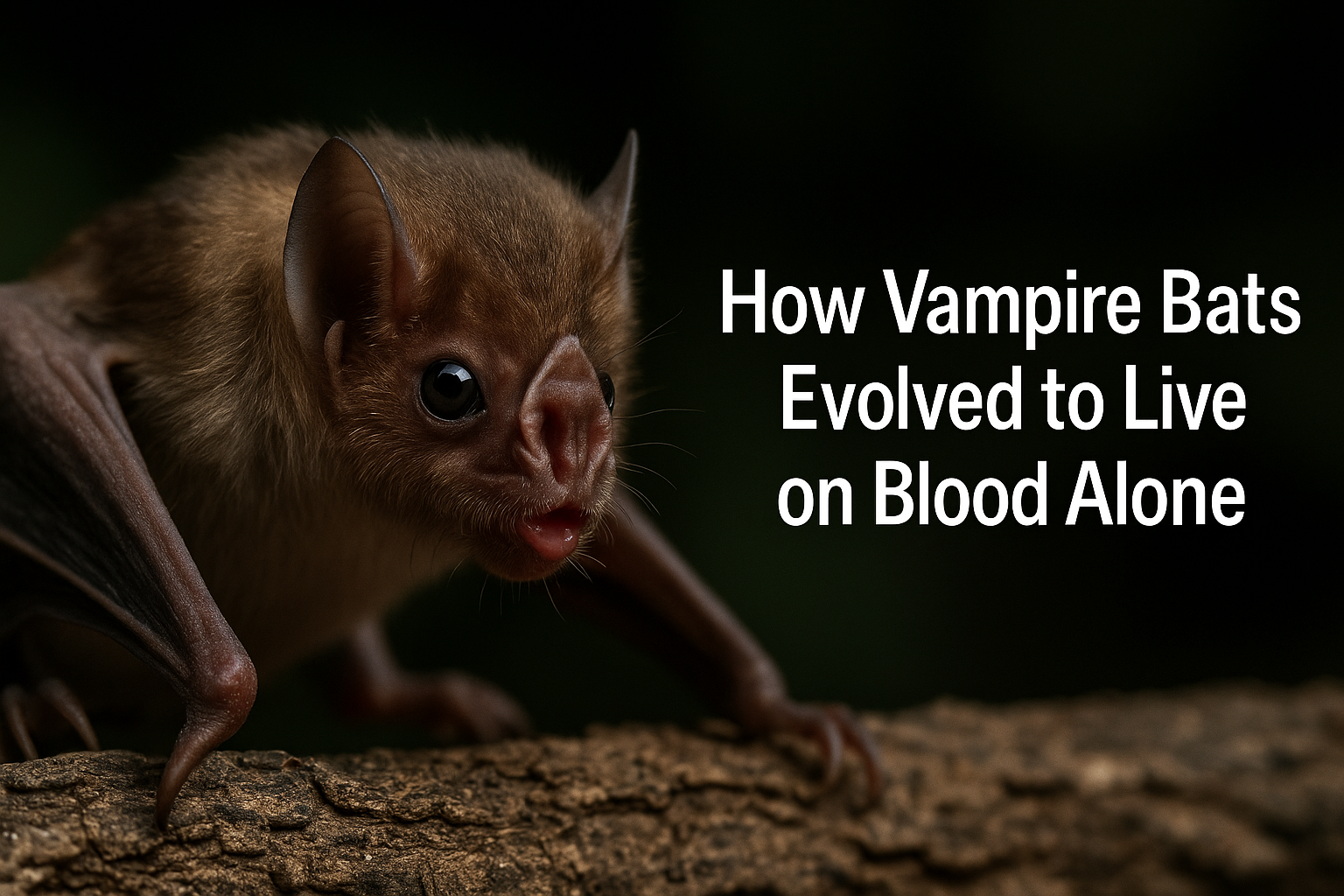Vampire bats are among the most fascinating and misunderstood creatures in the animal kingdom. Unlike other bats that feed on fruit, insects, or nectar, vampire bats have evolved to survive exclusively on blood—a dietary specialization known as hematophagy. But how did these nocturnal mammals develop such a unique and extreme adaptation?
This article explores the evolutionary journey of vampire bats, uncovering the genetic, physiological, and behavioral traits that allow them to thrive on blood alone. We’ll also examine how their feeding habits impact ecosystems and why they’re crucial for scientific research.
1. The Three Species of Vampire Bats
Not all bats drink blood—only three species are true vampire bats, all belonging to the subfamily Desmodontinae:
-
Common Vampire Bat (Desmodus rotundus) – Feeds primarily on mammal blood (cows, horses, pigs).
-
Hairy-Legged Vampire Bat (Diphylla ecaudata) – Prefers bird blood.
-
White-Winged Vampire Bat (Diaemus youngi) – Also targets birds but is rarer.
These species are native to the Americas, from Mexico to Argentina, thriving in tropical and subtropical regions.
2. Evolutionary Origins: From Insectivores to Blood Specialists
Vampire bats didn’t always drink blood. Their ancestors were likely insect-eating bats that lived around 26 million years ago. Over time, environmental pressures and competition for food drove some bats to explore new niches.
Key Evolutionary Adaptations
-
Sharp Teeth & Precision Biting – Vampire bats have razor-sharp incisors that make painless cuts, allowing them to feed unnoticed.
-
Heat-Sensing Nose Pits – Special infrared receptors help them locate blood vessels near the skin.
-
Anticoagulant Saliva – Their saliva contains draculin, an anticoagulant that keeps blood flowing.
-
Lightweight Body – Weighing just 30-40 grams, they can take off quickly after feeding.
These adaptations make them the only mammals entirely dependent on blood for survival.
3. The Science Behind a Blood-Only Diet
Blood is a challenging food source—it’s low in calories, high in protein, and lacks essential nutrients like fats and carbohydrates. So how do vampire bats survive on it?
Metabolic Adaptations
-
Rapid Digestion – They process blood quickly, excreting excess water within minutes to avoid weight overload.
-
Gut Microbiome – Special bacteria in their intestines help break down blood and synthesize missing nutrients.
-
Thermoregulation – After feeding, their body temperature rises, speeding up digestion.
Social Adaptations
Vampire bats are highly social and practice reciprocal altruism—if one bat fails to feed, others will regurgitate blood to share. This behavior ensures group survival.
4. The Role of Vampire Bats in Ecosystems
Despite their sinister reputation, vampire bats play an important ecological role:
-
Disease Control – By culling weak or sick animals, they help maintain healthy prey populations.
-
Medical Research – Their anticoagulant saliva has inspired potential stroke and heart attack treatments.
-
Pest Control – They sometimes feed on invasive species, helping balance ecosystems.
However, they can also spread rabies, posing risks to livestock and humans.
5. Could Vampire Bats Evolve Further?
Scientists speculate about future adaptations:
-
Expanded Prey Range – Could they adapt to human blood more efficiently?
-
Climate Change Resilience – Will warming temperatures push them into new regions?
-
Genetic Mutations – Could they develop resistance to anticoagulant-based pest control?
Ongoing research aims to understand their evolutionary potential.
Conclusion
Vampire bats are a marvel of evolution, showcasing how extreme dietary specialization can lead to remarkable biological adaptations. From heat-sensing abilities to blood-sharing social bonds, they’ve mastered survival in ways no other mammal has.
Understanding their biology not only demystifies these creatures but also highlights their importance in medicine and ecology. As research continues, vampire bats may unlock even more secrets about evolution, disease resistance, and survival strategies.




Leave a Comment